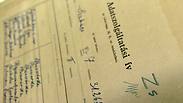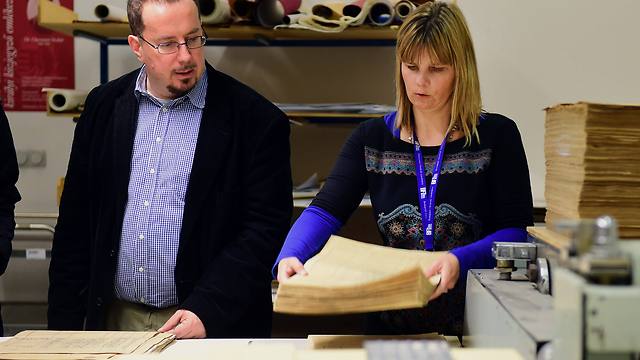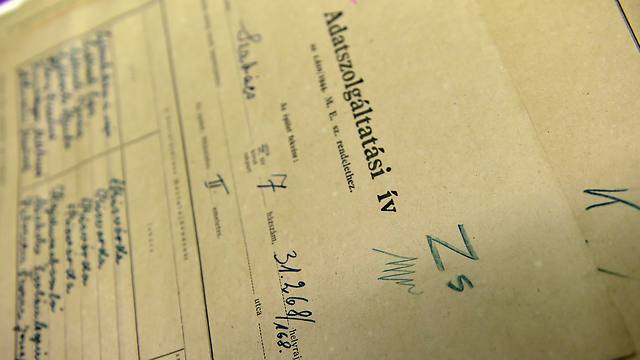
Holocaust documents trove unearthed in Budapest apartment
Some 6,300 documents from a 1944 census done two months after Nazis invaded Hungary indicate how many Jews lived in each building in order to identify area for ghetto.
A vast and historically valuable trove of Holocaust-era documents, long thought destroyed during World War II, has been found hidden in a wall cavity by a couple renovating their Budapest apartment.
The haul of 6,300 documents are from a 1944 census that was a precursor to the intended liquidation of the Hungarian capital's 200,000 Jews in Nazi death camps.
Brigitte Berdefy, co-owner of the apartment overlooking Hungary's parliament, said that in August a worker detected paper after jamming a screwdriver through a crack in the wall.
"We thought we'd ruined the neighbor's wallpaper," Berdefy told AFP.
But then her husband Gabor peered through the crack and saw what looked like handwriting.
Carefully removing each brick, the couple eased out some 61 kilograms (135 pounds) of dusty papers, many with bits of plaster caked on, but all more or less intact.
With the ink still readable - thanks to a lack of air in the cavity and nicotine from the heavy-smoking former owner - the yellowed papers were given to the Budapest City Archives.
Istvan Kenyeres, head of the archives, was amazed.
"Most wartime papers are more faded or rotten than medieval documents, on bad quality paper due to the rationing," he told AFP.
"The content and scale of the finding is unprecedented," he said. "It helps to fill a huge gap in the history of the Holocaust in Budapest."
Ironing history
Since September, restorers at the archives have been literally ironing the papers to study them, pausing occasionally when they spot someone famous among the scrawled names.
The May 1944 Budapest census was to identify houses to serve as holding locations for Jews before moving them to a planned walled ghetto in the city's seventh district.
Two months earlier Nazi Germany had occupied Hungary and deportations in the countryside to the gas chambers of Auschwitz began almost immediately.
The forms found in the Budapest apartment contain names of each building's inhabitants, and whether they are Jewish or not, with total numbers of Christians and Jews marked in the corners.
"Jewish people filled in the forms honestly, they refused to believe where this might end up," said Kenyeres.
Shortly after the census, around 200,000 Jews were moved into some 2,000 selected buildings, "Yellow Star Houses" with the Star-of-David Jewish symbol painted on the doors.
"Thanks to the Berdefys, we know that if a lot of Jews lived in a building then it likely became a Yellow Star House," Kenyeres said.
In late 1944, they were crammed into the ghetto, where some died of starvation or were shot next to the river - a poignant memorial of abandoned iron shoes today marks the spot.
The arrival of the Russian army in January 1945 saved the rest though, and unlike the Jews from outside the city, most of Budapest's Jewish population survived.
An estimated total of 600,000 Hungarian Jews perished in the Holocaust, most in Auschwitz.
Kenyeres said that an estimated 23,000 more documents may still be out there which would give further valuable insight into what happened in 1944 and would also be digitalised and made available to the public if they turned up.
"People should look behind their walls, you never know in Budapest what could be there."













